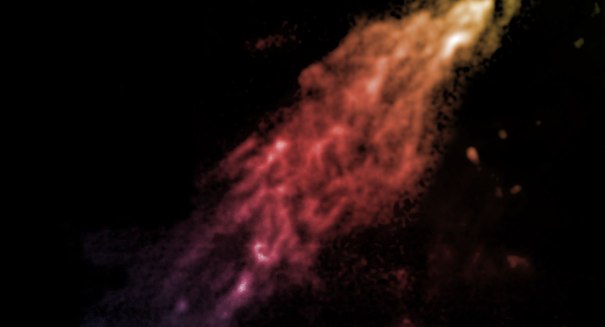
CSIRO astronomers have found that the Smith Cloud has a magnetic field that's 50,000 times weaker than Earth's.
Australia’s Commonwealth Scientific and Industrial Research Organisation (CSIRO) says the Milky Way galaxy is addicted to gas. In fact, astronomers at the CSIRO believe that our galaxy may have been consuming clouds of gas with a magnetic wrapper to continue generating stars for the past eight billion years.
CSIRO astronomers turned to the Smith Cloud, a gigantic gas cloud falling into the Milky Way from intergalactic space, to learn more about our galaxy’s addiction to gas.
“Clouds like this may provide the fuel for our Galaxy to make stars,” noted lead author Alex Hill, a CSIRO astronomer, in a statement.
“But they must be held together by something, or they’d disintegrate when they hit the warm outer part of the Galaxy — the halo,” Hill added. “They wouldn’t reach the Galaxy’s disk, where the star-making is going on.”
CSIRO astronomers have found that the Smith Cloud has a magnetic field that’s 50,000 times weaker than Earth’s, but it’s probably still strong enough to keep the cloud together. The Smith Cloud is one of the few such clouds large enough for astronomers to measure its magnetic field. Naomi McClure-Griffiths, a CSIRO astronomer, points out that it looks like the cloud is protected by a magnetic bubble.
According to astronomers, the Smith Cloud is massive. In fact, the cloud is at least two million times the mass of our Sun. If a person could see the cloud with his or her naked eye, it would look 20 times wider than the full Moon.
CSIRO astronomers contend that the Smith Cloud is one of thousands of “high velocity clouds (HVCs)” of hydrogen gas traveling around the outskirts of our galaxy. They also think that the origins of HVCs are mixed, some originating from burst “bubbles” in the gas of the Milky Way, some being early gas, and some linked to small galaxies that our galaxy’s gravity is ripping apart from a distance. The Smith Cloud is probably either semi-primitive gas condensing from the halo of our galaxy or gas ransacked from another galaxy.
Traveling at 130 kilometers per second, the Smith Cloud is only 8,000 light-years from the Milky Way’s disk, meaning that it will fall into it in less than 30 million years.
Leave a Reply